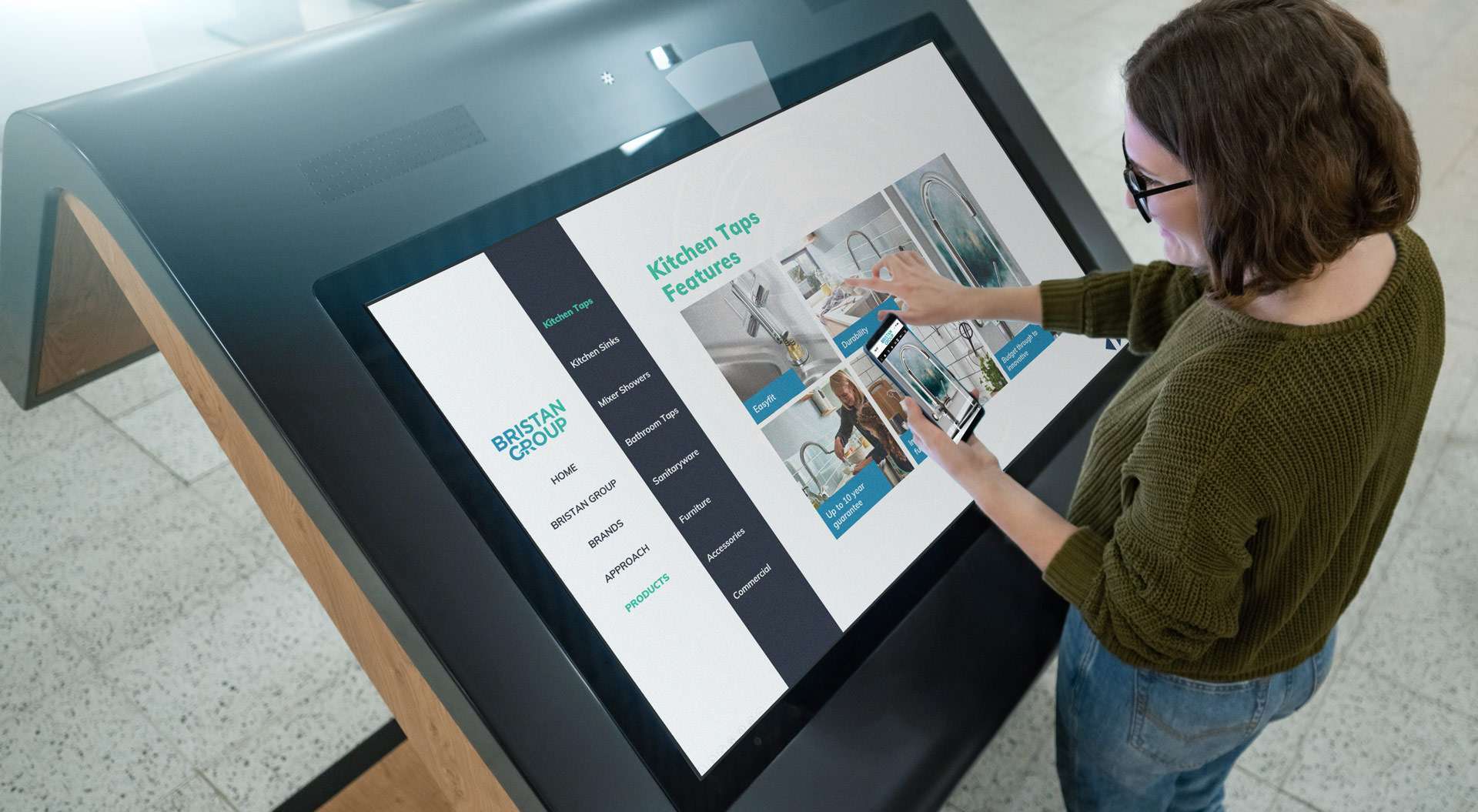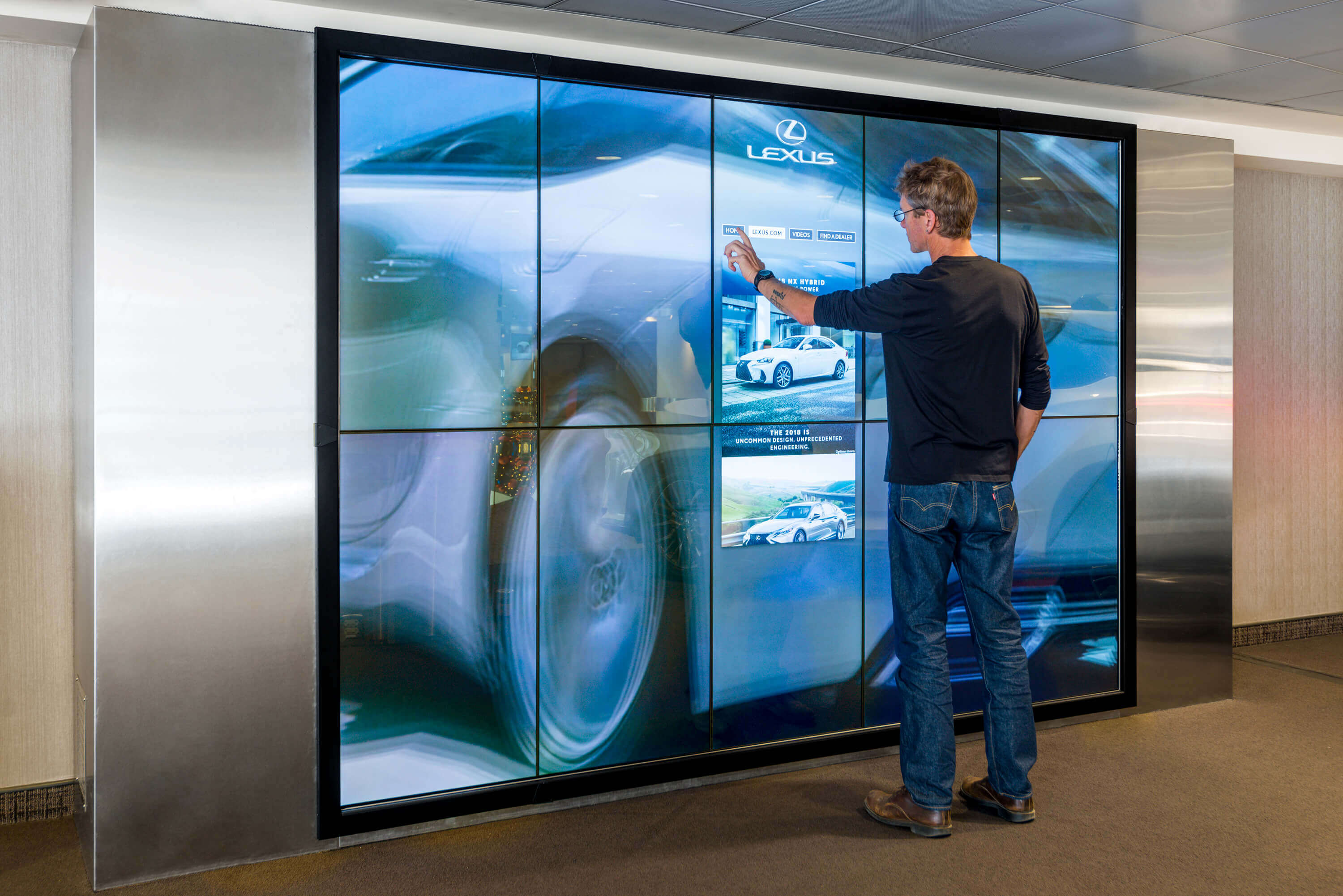Tech
Revolutionizing Interaction: The Rise of Interactive Screens

Interactive screens are becoming increasingly popular in a variety of industries, from education and entertainment to retail and business. These screens allow for a new level of engagement and interactivity that traditional displays simply cannot match. As technology continues to advance and become more accessible, we can expect interactive screens to become even more prevalent in our daily lives.
One of the most notable areas where interactive screens are being utilized is in the classroom. These screens allow teachers to present information in a more engaging and interactive way, making learning more fun and memorable for students. Interactive displays can be used to present information in a variety of formats, including video, audio, and images, and can be easily manipulated and interacted with. This allows students to engage with the content in a more hands-on way, increasing their level of comprehension and retention.
In addition to the classroom, interactive screens are also becoming increasingly popular in meeting rooms and conference spaces. These screens allow for more collaborative and interactive meetings, as participants can easily share ideas and information with one another in real-time. This not only improves communication and collaboration but also helps to streamline the meeting process, making it more efficient and productive.
Interactive screens are also making waves in the entertainment industry. Theme parks and museums are incorporating interactive displays into their exhibits and attractions, creating immersive and engaging experiences for visitors. Interactive screens can be used to display information, provide interactive games and activities, and even create augmented reality experiences, allowing visitors to interact with their surroundings in a whole new way.
The retail industry is also benefiting from the use of interactive screens. Retailers are using interactive displays to create engaging and personalized shopping experiences for their customers. These displays can be used to showcase products, provide information about the products, and even allow customers to interact with the products in a virtual way. This not only enhances the customer experience but also helps retailers to increase sales and customer loyalty.
Interactive screens are also being used in the business world to enhance productivity and collaboration. These screens can be used for video conferencing, project management, and even as interactive whiteboards for brainstorming and idea sharing. By incorporating interactive screens into the workplace, businesses can improve communication, collaboration, and productivity, ultimately leading to better results and increased success.
One of the most notable benefits of interactive screens is their versatility. They can be used in a variety of industries and settings, from the classroom to the boardroom, and can be easily customized to meet the specific needs of each situation. Interactive screens can be used to display information, provide interactive experiences, and facilitate collaboration, making them an invaluable tool in today’s fast-paced and ever-changing world.
As technology continues to advance, we can expect interactive screens to become even more advanced and versatile. We may see the development of new features and applications that allow for even more interactivity and customization, further enhancing their usefulness and appeal. Additionally, as the cost of interactive screens continues to decrease, we can expect to see them become more accessible to a wider range of industries and individuals.
In summary, interactive screens are revolutionizing the way we interact with information, each other, and the world around us. From the classroom to the boardroom, these screens are enhancing engagement, collaboration, and productivity in a variety of industries and settings.
As interactive displays become more prevalent in various industries and settings, it’s natural for people to have questions about them. Here are some of the most common questions people have about interactive displays:
What is an interactive display, and how does it work?
An interactive display is a display screen that allows users to interact with it using touch, gestures, or a stylus. These displays use sensors or cameras to detect the user’s input and respond accordingly. They work by displaying content, such as text, images, or videos, and allowing users to interact with the content in real time.
What are the benefits of using interactive screens?
Interactive displays offer numerous benefits, including increased engagement and interactivity, improved collaboration and productivity, and a more personalized and immersive experience. They can be used in a variety of settings, including classrooms, meeting rooms, retail environments, and entertainment venues.
How much do interactive displays cost?
The cost of interactive displays can vary widely depending on the size, resolution, and features of the display. Smaller displays, such as those used in classrooms, can cost a few hundred dollars, while larger displays used in conference rooms or retail environments can cost several thousand dollars. However, as technology continues to advance, the cost of interactive displays is expected to decrease.
What are some popular applications for interactive displays?
Interactive displays are used in a variety of industries and settings, including education, business, retail, and entertainment. Some popular applications include interactive whiteboards for classroom instruction, collaborative displays for meetings and presentations, and interactive exhibits for museums and theme parks.
How can interactive displays improve collaboration and productivity?
Interactive displays allow users to share and interact with content in real-time, making it easier to collaborate and work together on projects. They can be used for video conferencing, interactive whiteboarding, and project management, among other applications. By using interactive displays, teams can work more efficiently, share ideas more easily, and achieve better results.
How do interactive displays differ from traditional displays?
Traditional displays, such as computer monitors or televisions, are designed for passive viewing and do not allow for interaction or input from users. Interactive displays, on the other hand, allow users to interact with the content on the screen using touch, gestures, or a stylus. This makes them more engaging, immersive, and interactive.
What are some challenges associated with using interactive displays?
One challenge of using interactive displays is ensuring that they are properly calibrated and maintained to ensure accuracy and reliability. Additionally, interactive displays may require specialized software or hardware to function properly, which can add to the cost and complexity of using them. Finally, users may require training or support to effectively use interactive displays, particularly if they are unfamiliar with the technology.
































